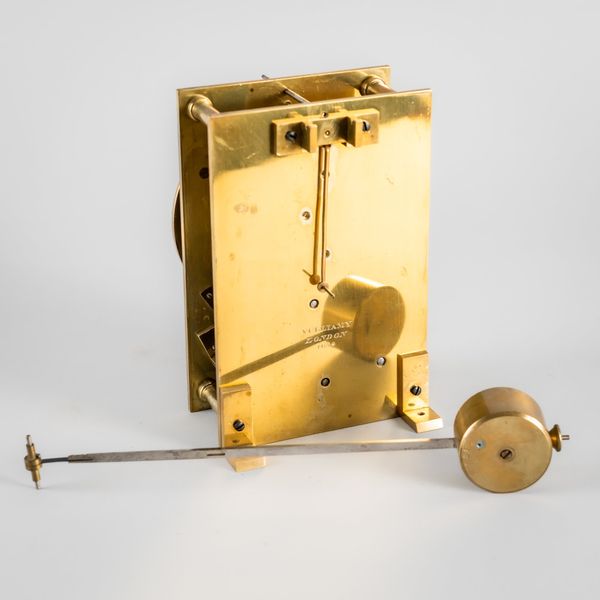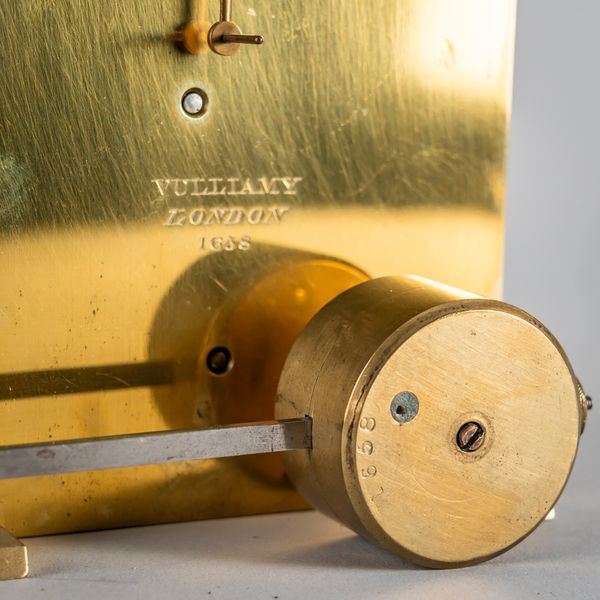A RARE EARLY VICTORIAN ASHFORD BLACK ‘MARBLE’ MANTEL TIMEPIECE
By Benjamin Lewis Vulliamy, London, No. 1658, Circa 1845
| Estimate: | £1,000 - £2,000 |
| Hammer price: | £6,000 |
The case of architectural form with an arched top, above a moulded cornice, the front with a foliate engraved glazed bezel , with 4in silvered engine-turned dial signed VULLIAMY LONDON with blued steel Breguet moon hands, with off-set hand setting and winding at the XII and VI o’clock, between canted angles, on a stepped base and block feet, the reverse with an ebonised panel door, the rectangular movement signed VULLIAMY LONDON 1658 with gut fusée movement and semi-deadbeat escapement, with steel rod and numbered heavy brass bob pendulum
32.5cm high
Benjamin Lewis Vulliamy (d. 1854). Clockmaker to George III and also The Prince Regent, later George IV.
The case of this clock is made from Ashford Black Marble, a limestone quarried from mines near Ashford-in-the Water, Derbyshire. Another version of this clock, No. 1545, inlaid with pietra dura, was recently sold in the retail market.
A new special exhibition has just opened at the The Clockmakers Museum, which is housed at the Science Museum, South Kensington, Benjamin Lewis Vulliamy: A Champion of British Craftsmanship, until 2 November 2025.
https://www.clockmakers.org/vulliamy
https://blog.sciencemuseum.org.uk/benjamin-lewis-vulliamy-a-champion-of-british-craftsmanship/
COMPARATIVE LITERATURE
Antiquarian Horology, Vol. 19, No. 6, December 1991, p.56, for Roger Smith's Vulliamy Clock Numbering A Dated Series.
CONDITION REPORT
With its numbered pendulum and a key. The clock is in original condition, unrestored. The upper section of the front panel appears to have been repaired at some point. The repair lines are visible on the front at 2.30 and 9 o’clock just by the bezel. The two front corners of the cornice each have a slight chip as does the rear end of the right moulding (about 2cm long). Other slight chips on the lower part. The surface of the case which is a type of dark Derbyshire limestone has a bloom.






